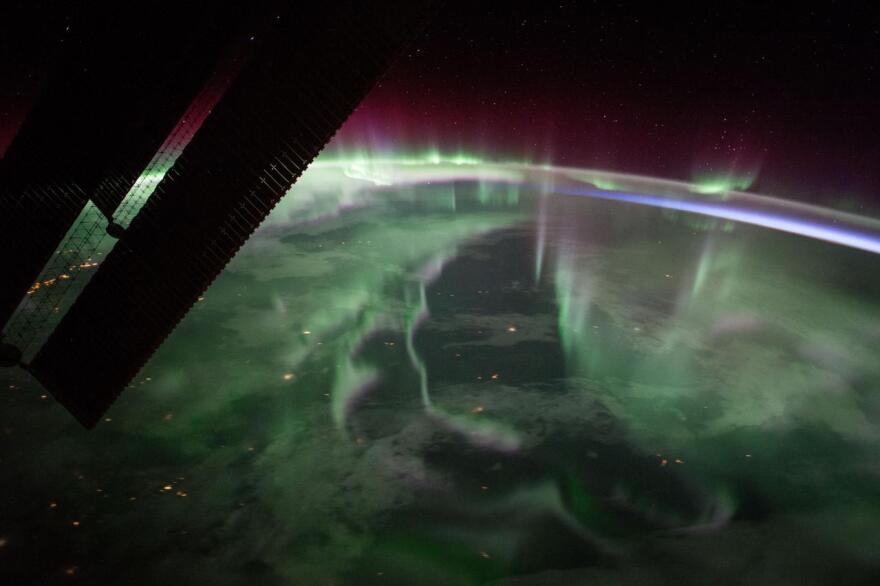Space exploration at a crossroad
Budget cuts are hitting NASA hard, including the outlook at sending Americans back to the moon.
The Trump Administration’s proposed budget would cut NASA’s funding by 24% overall, including a 47% cut to its science budget.
Chris Carberry, CEO and co-founder of Explore Mars, wrote in a recent op-ed, “Let's not allow the golden age of space exploration to turn itself into fool's gold.”
He wrote about how political changes and budget cuts could change the course of U.S. space exploration and urged Congress and the Trump administration to do more than restore NASA’s budget. Carberry believes clear and ambitious steps to the moon and Mars need to be laid out.
“It's interesting we are simultaneously poised for that golden age of space exploration, but also poised to let it all fade away, and by our own fault as well,” Carberry said. “We are lined up. We have all these wonderful launch vehicles and development here. We're poised to do Artemis two early next year. The commercial sector is just blooming everywhere, but at the same time, policy wise, things are in chaos.”
Space exploration has generally had bipartisan support from politicians and the public, spanning many administrations. Support for scientific experimentation has been less so.
"For some reason there's a disconnect in the understanding of how science really does help in those broader goals, human exploration goals,” Carberry said. “We've had the most successful Mars robotic mission ever orchestrated. We've learned so much in the last more than two decades about the potential of life on Mars, and the geology of Mars, but also the resources on Mars, it has really helped us move forward, gaining the understanding to be able to send human, but we're not done yet.”
President Donald Trump in both his inaugural address and statement to congress recommitted to sending Americans to Mars.
A major driver of U.S. space innovation has been the ongoing race with China. Samples were collected by the nation from the far side of the moon in 2024 during the first-of-its-kind Chang’e-6 mission. China aims to build a nuclear power reactor on the moon by 2030, and a permanent lunar research center shortly thereafter.
“We also understand that China has very strong, ambitious goals. They stick to it,” Carberry said. “It’s something we can't ignore, because even if they're not moving quickly, they are moving steadily. The more we just sit around, they will eventually surpass us.”
What’s in the sky?
As the weather cools down, the skies open up.
The lowering humidity grants a much clearer view has granted a better view of a busy night sky.
Last week, Americans were greeted with color as an aurora painted the sky. These events are caused by charged particles from the Sun, hitting Earth’s atmosphere.
Terry Oswalt, professor of physics and astronomy at Embry Riddle Aeronautical University, turned his eyes to the sky in hopes of the aurora making its way down to Florida.
“The sun has been unusually active. It's been on the high side of its 11-year activity cycle for over a year now. We're supposed to be on the downslope of its activity cycle,” Oswalt said. “But just [last week] an X class flare has occurred, and there have been a couple other burps right before that, and all three of those puffs of plasma from the sun are sent on their way here to collide with the Earth's upper atmosphere and magnetic field.”

Jupiter and Saturn are incredibly bright in the sky during winter months.
Seth Mayo, planetarium director at the Lohman Planetarium at the Museum of Arts and Sciences in Daytona Beach, is keeping his eye on them. He said to look for bright, non-twinkling “stars” in the southeastern sky that seem to move throughout the year. From there, you can see the very edge of Saturn’s rings.
The moon experienced a perigee, bringing it closer to Earth and making it appear brighter. Four consecutive supermoons will or have taken place October, November and December, joined by another in January of next year. The moon’s recent prominence in the sky is not caused by just distance, according to Mayo.
“You have the Corn Moon and the Harvest Moon, when the moon is rising at a more inclined angle and you have more time with the moon rising. You get this great view a little bit longer in the evening, when the moon looks really large closer to the horizon,” Mayo said. “It creates this thing called the Moon illusion, where your brain thinks the moon looks larger and bigger, almost like watching it in a movie or something. When the moon is low and you notice it longer in the lower section of the sky, just seems so much bigger and more imposing to you.”
There are more events on the horizon as sky gazers turn their attention towards the Leonid and Geminid meteor showers in mid-November and mid-December. The debris from 3200 Phaeton, what’s believed to be a husk of an old comet, will come crashing down into Earth’s atmosphere to dazzle onlookers.
What we're seeing when we see those ‘shooting stars’ in the sky are roughly dust-grain-sized pieces of rock and mineral that have been thrown out of a comet when it evaporates,” Oswalt said. “It's kind of like lovebugs hitting our windshield when the earth is moving through its orbit.”





